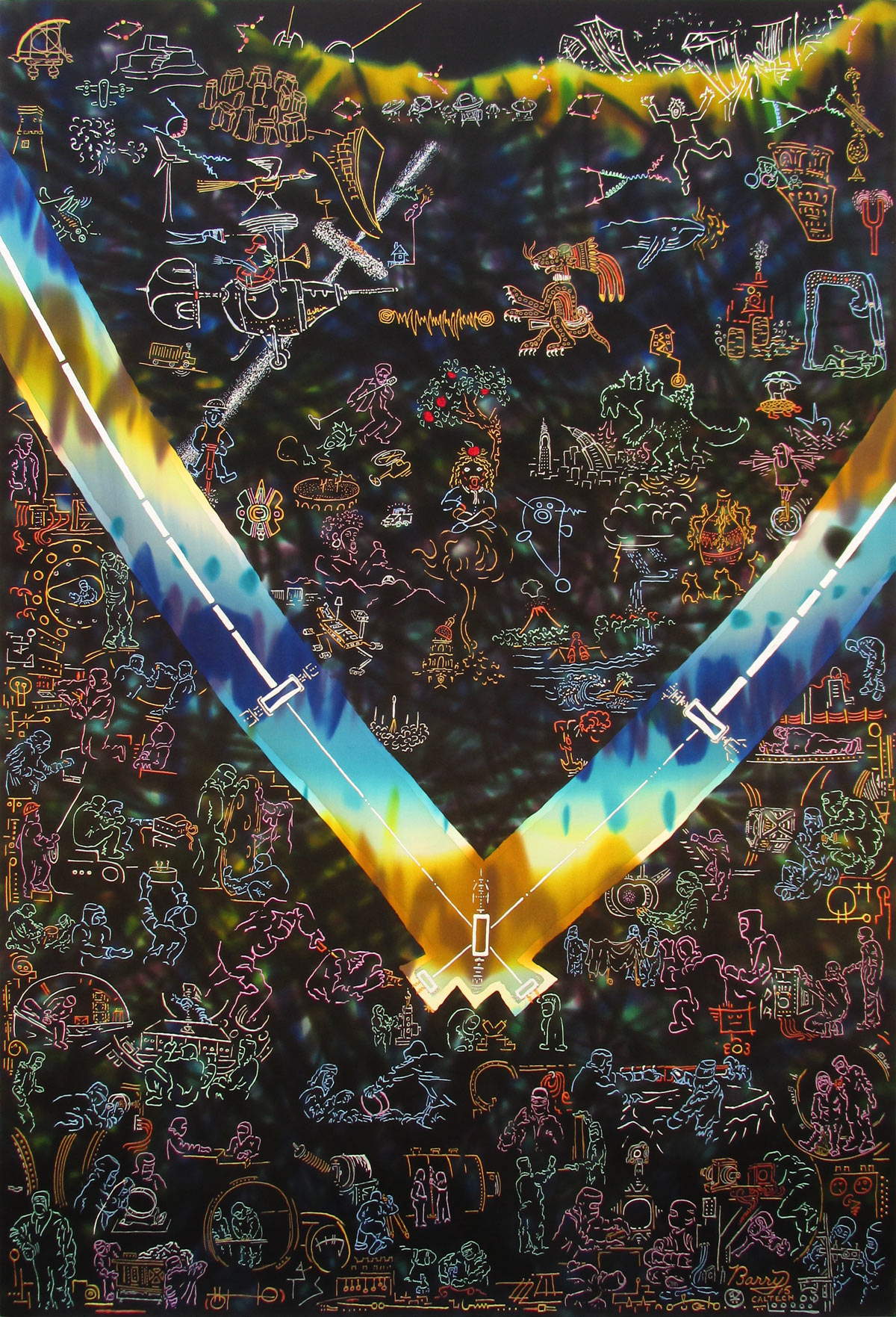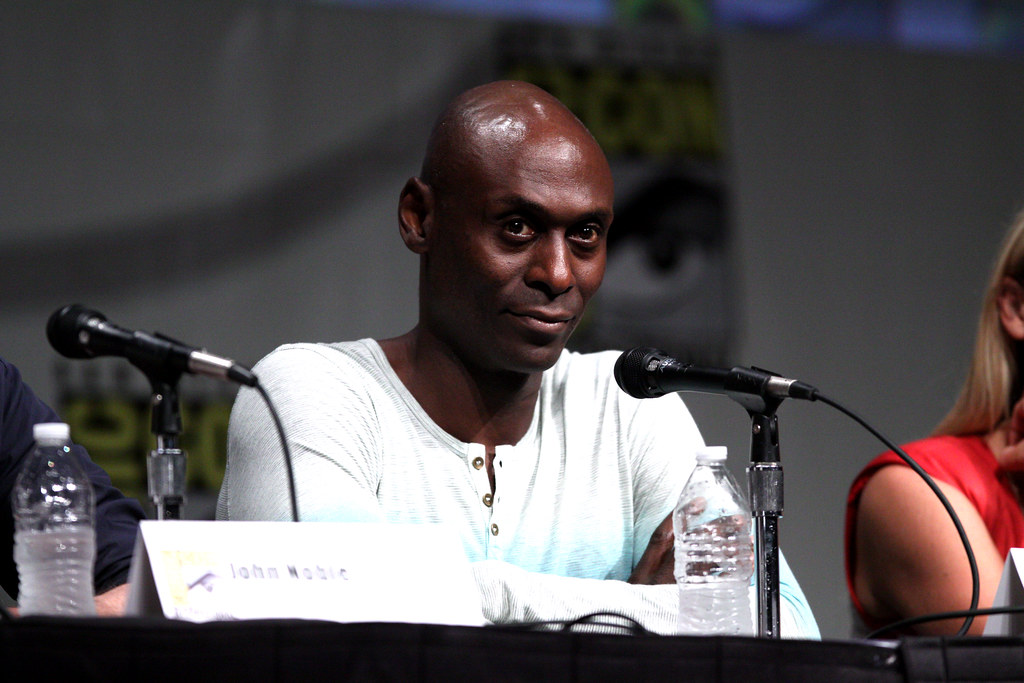On March 12, Joann’s Art Space at 1745 Orlando Rd. in San Marino opened a solo exhibition featuring the artwork of Jim Barry, the Visual Art Director at California Institute of Technology (Caltech). His pieces are available for purchase and can be viewed by appointment only until April 11, 2023, by calling (626) 999-1777.
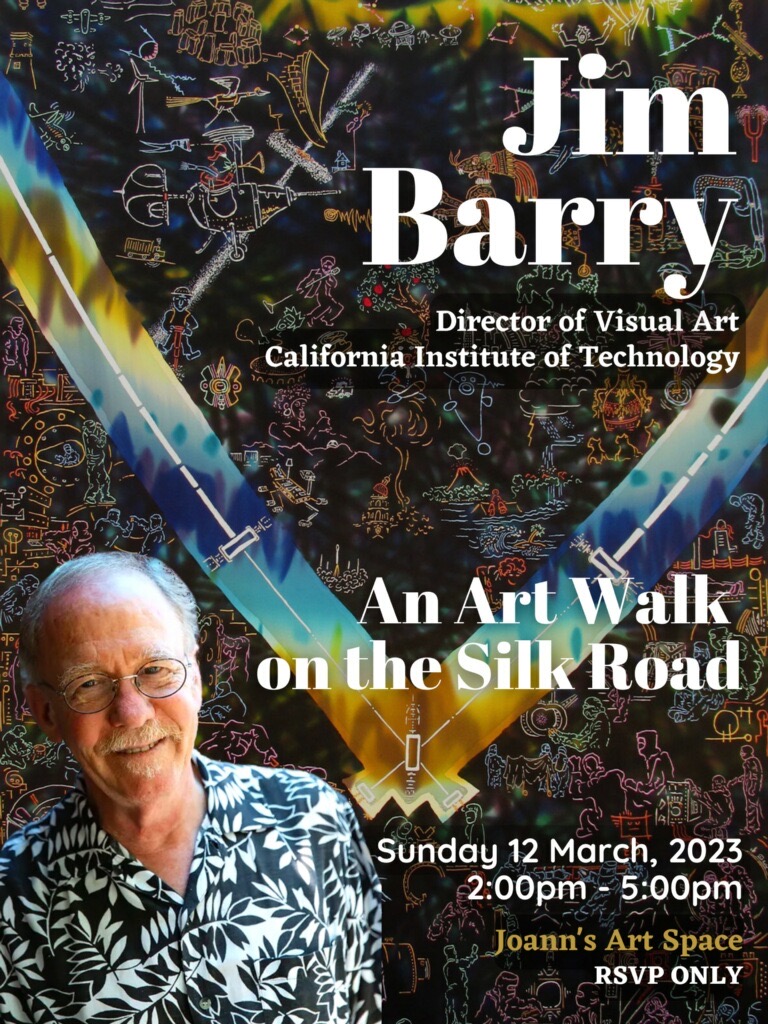
Called “An Art Walk on the Silk Road,” the exhibition features 79 silk paintings divided by themes: Science, Dance, Landscape, and Africa. In the landscapes are a number of pieces of Chinese scholar, viewing stones, and bonsai or pénjǐng.
In Science, he shows “Scientist’s Dream” a desktop room temperature detector for dark matter. It uses an interferometer for calibration and gas inside a chamber. Detection of dark matter is evident by the purple sparks in the chamber. This dream is just that, though — far beyond today’s technology.

The poster features the LIGO project for detecting black hole collisions, a depiction of project teams, noise the machine needs to filter, and the global human history of observatories with examples from China, Korea, England, Egypt, Peru, etc.
The dance pictures feature hip-hop dancers Barry sketched while they developed their routines.
A long time Caltech academic, Barry has been teaching classes at Caltech since 1987 – the year students changed the Hollywood sign to read ‘Caltech’ for a day. His courses include Silk Painting, some Silkscreen, and Drawing and Painting with Figure Drawing. He has also been instrumental in creating new virtual reality tools and interactive spaces with Santiago Lombeyda at the Center for Data-Driven Discovery (CDDD).
Because his grandmother was a painter, visual art had been his passion at an early age. He didn’t think of it seriously as a future career, however, and instead, he pursued a Bachelor’s degree that related to his interest in African life and culture. He received BA degrees in Cultural Anthropology, focusing on Africa and Black Studies with an emphasis on Race Relations, from the University of California Santa Barbara.
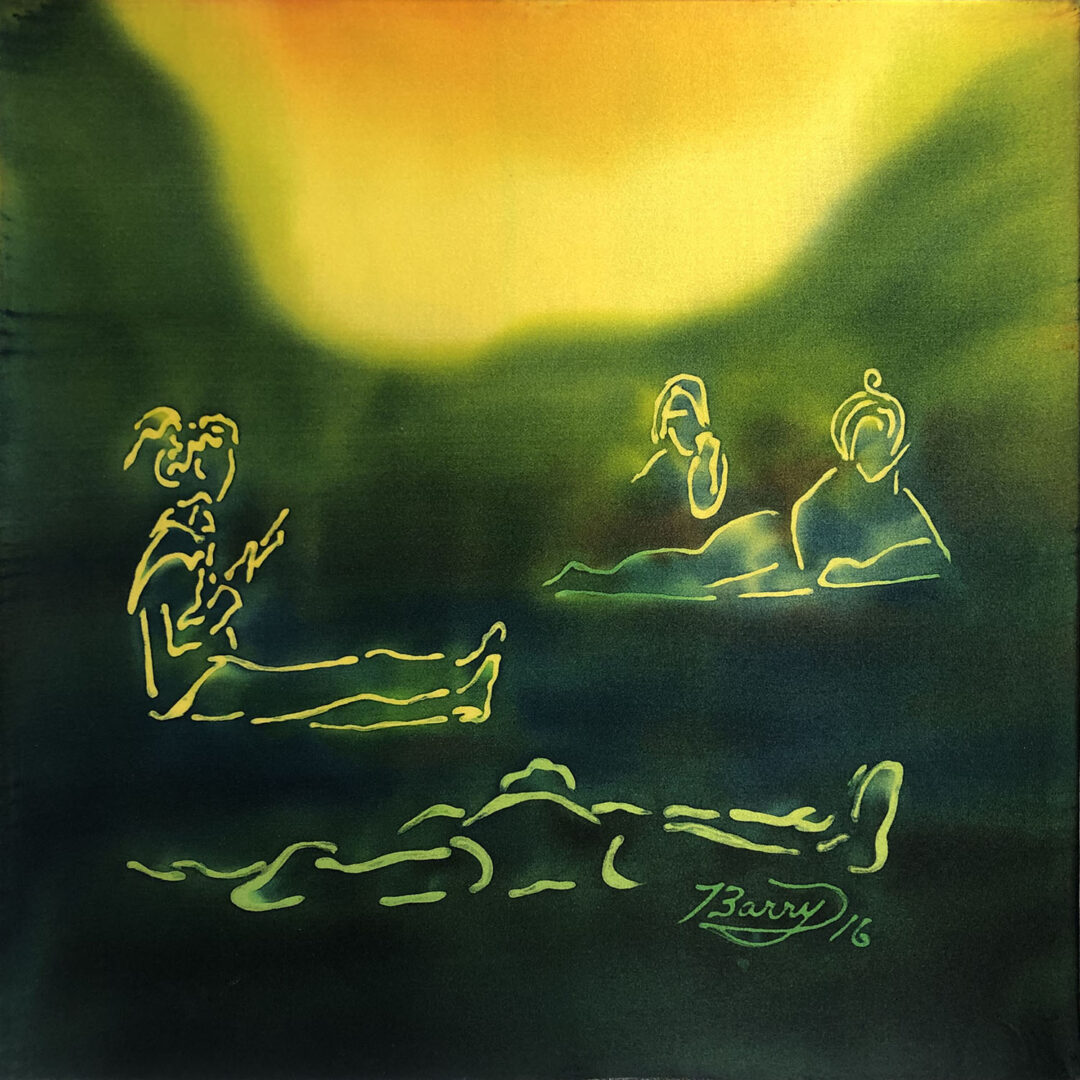
Graciously agreeing to be interviewed by email and phone, Barry answers questions about how painting and teaching became his twin vocations. He relates, “I decided to go to West Africa after college. I was already interested in African life and culture; being able to explore many areas deepened my knowledge and led to more specific destinations such as Oualata, Mauritania, and the Dogon Country in Mali. I applied to graduate school to study Sociology at the University of Ibadan and I was accepted two years later, but had problems getting a visa.”
Barry continues, “So I went to Senegal. I arrived during an important ‘flowering’ of modern Senegalese painting driven in part by the President, Leopold Senghor, who was a well-known writer and poet. I met Senegalese artists and found my chosen medium, batik on cotton, was sought after but not well established. I shared a studio with the artist/painter, Aissa Dione — who’s now a textile artist — on the island of Goréé. My art started to sell and I traveled out to other countries putting up exhibits, leaving them to travel to small villages and interesting historic cultural centers often in remote areas.”
“That was what I’ve always wanted to do and I abandoned my plan to attend graduate school,” Barry discloses. “I remained in Senegal for four months, then spent two months in Gambia working in a batik cooperative, Gena Bess. I returned to Dakar for the larger Senegalese art community and market. After some time I began further travels to Mauritania and Mali and did shows with the cooperation of French and American cultural centers. The work I showed included Batik, Etchings, Watercolors, and pencil sketches.”
“Due to my interest in Anthropology, I learned greetings in the different languages I encountered. It was easy to make friends while I was traveling alone on public transportation. People far into the countryside respected the occupation of an artist and it was not unusual to get good advice from people who might have never entered a museum,” says Barry.
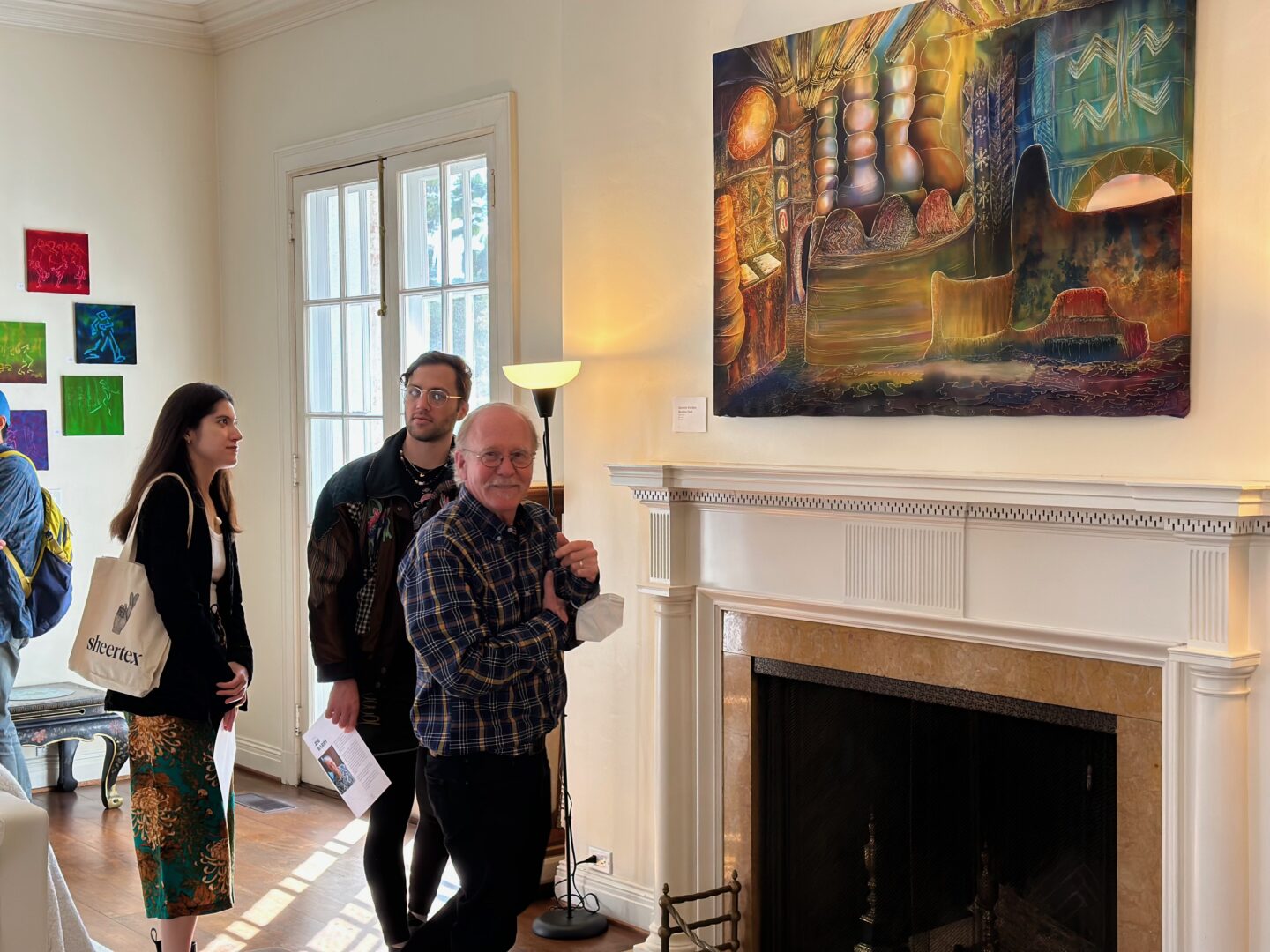
In 1981 Barry returned to the United States, and while visiting the Armory Center for the Arts he was invited to teach there. “It went really well; I was apparently good at teaching!” he marvels. “That eventually led to a job at Polytechnic School (Caltech’s sister school) a few years later, teaching a Perspective course for sixth graders. Then Caltech conducted a search for a teacher when the institution was seeking to reintroduce its Visual Art program after a long hiatus and I got the part-time job while still working as a teacher at Poly.”
While he held two teaching posts, though, he continued to paint. He held several exhibitions during return trips to West Africa.
Barry started silk painting after three decades of doing batik. “I refined and invented so many techniques that everything became highly complex. I felt I had painted myself into a corner,” he jokes.
“At an international Batik Conference in Boston, I was introduced to silk painting from Japan at a level I could appreciate and learn from,” Barry explains. “By transitioning I left behind the more toxic chemicals I had been working with on cotton since Africa. My silk painting has little in common with traditional Chinese artwork in that dye thickeners are not used. In many cases, it is closer to wet-on-wet watercolor but can be scaled larger.”
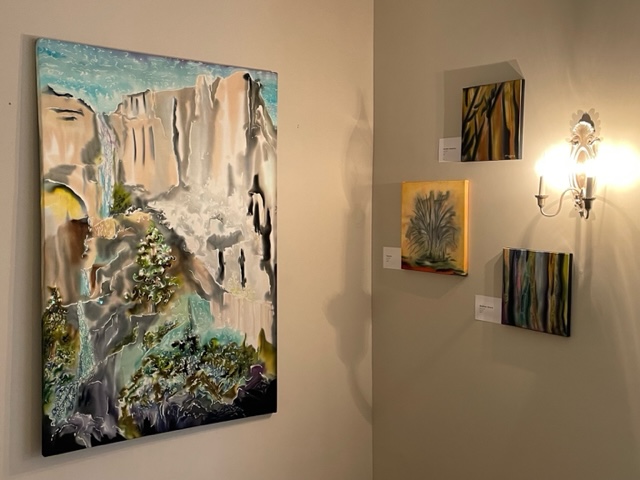
Asked to describe his process, Barry replies, “Some pictures start with sketches from my daily sketchbook, transition to more drawings, then quick watercolors in preparation for a final large piece. Others begin with a color abstract that gets drawn into with the gutta resist (like wax), then more color, more gutta, etc., until I have achieved my goal or occasionally give up. There is no erasure in silk painting.”
“I like to paint and design both in the studio and in plein air,” explains Barry. “Taking photographs is rarely helpful to me. I will take them for information, but they are seldom used.” As to his painting style, he says, “I prefer to get my lines ‘right’ but enjoy playing with color. I rarely paint a blue sky in that it conveys no emotion.”
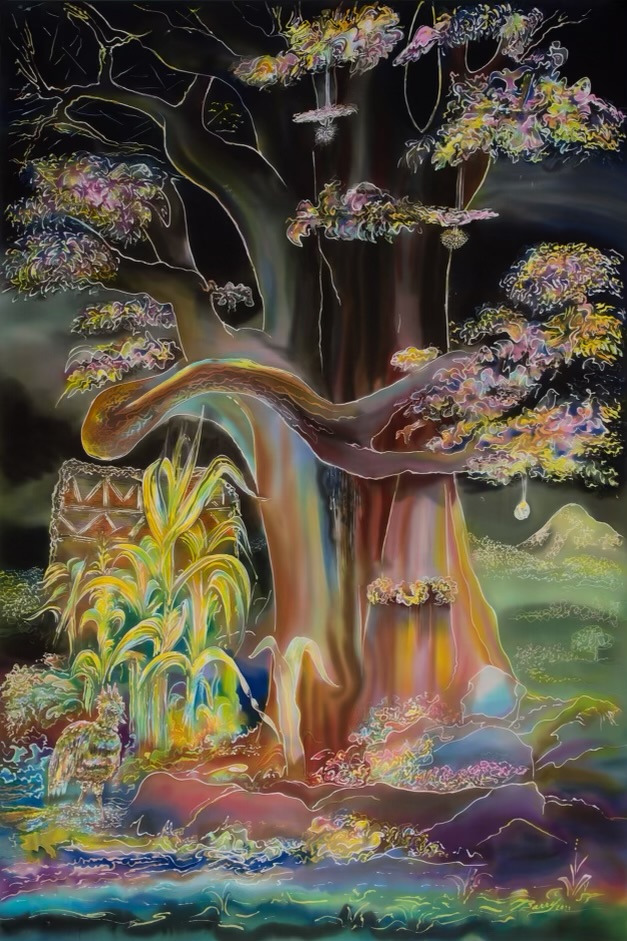
All of Barry’s paintings are done for the purpose of selling them and he doesn’t have a favorite painting that he never plans to sell.
Barry divulges, “While in Dakar, I had a complex painting of a flying turtle over Africa inspired by a mask statue. I made hand-colored etchings of it and tried to keep the original. Someone bought one of the etchings, and when I mentioned that I had the batik, he wanted that. I insisted it was not for sale; if it were, the price would be a certain multiple of the etching. Though he still wanted it at that, I would not sell. Later in the day, he returned saying he would make it ‘hard on me’ and offered me double. I sold it immediately! Then I asked what he did. It turns out he helps install airports in Africa.”
For someone who has neither a degree in painting nor teaching, Barry has definitely succeeded in both endeavors. And no matter how having a full-time job keeps him busy most days, he always finds the opportunity and time for his passion. As he pronounces, “Perhaps it’s an obsession. Painting is like a sport; one learns mostly by practicing and thinking about it on the field.” Spoken like a philosopher too.

